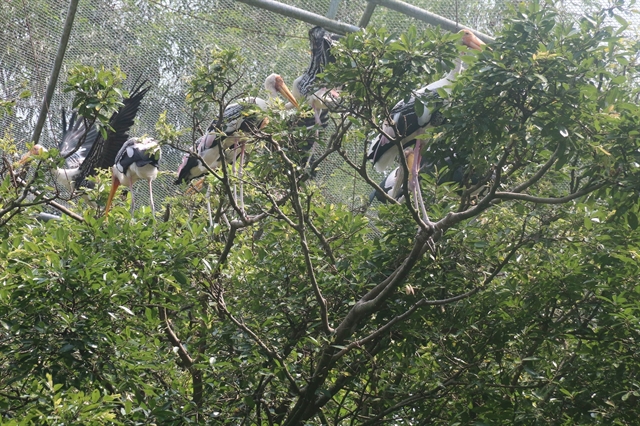 Opinion
Opinion

Chief Inspector of Hà Nội’s Transport Department Trần Nhật Quang speaks to Kinh tế & Đô thị (Economic and Urban Affairs) newspaper about difficulties in curbing transport violations in the city.
 |
| Chief Inspector Trần Nhật Quang — Photo kinhtedothi.vn |
Chief Inspector of Hà Nội’s Transport Department Trần Nhật Quang speaks to Kinh tế & Đô thị (Economic and Urban Affairs) newspaper about difficulties in curbing transport violations in the city.
What are the main tasks of transport inspectors in Hà Nội?
Among transport inspectors’ assignments, the most notable tasks are to co-operate with traffic police in traffic operation and overseeing and addressing violations in transport business, traffic work protection, urban order and parking lots managed by the city’s Transport Department.
Since the beginning of this year, transport inspectors detected and tackled more than 11,000 violations, collected fines worth over VNĐ 21 billion, seized vehicles and driving licences and demolished thousands of illegally-built works that threatened road safety.
The inspectors also co-operated with authorities in districts and towns to remove dozens of illegal parking lots, especially those on farming land or on roads.
Which violations do you detect most?
Violations relating to transport business – both passenger transport and goods transport –dominate. The violations are very diverse and complicated, which causes difficulties for us.
There are more than 400 routes of coaches transiting via Hà Nội daily while the city’s planning on inter-provincial coaches is not completed. Many coaches operate on the same routes but local passengers don’t go to coach stations to catch their coaches. Instead, passengers usually wait for the coach along the route, which leads to violations in which coaches drive slowly on the road to pick up passengers. They pick up or drop off passengers at illegal stops.
In goods transports, trucks are found to be overloaded, oversized or drop building materials/waste on roads.
What difficulties do you usually face in detecting and addressing such violations?
We badly lack staff. Now, the inspectorate of the city’s Transport Department has 573 employees but only 205 inspectors are qualified to record violations and fine violators. Ninety-five managerial staff leading divisions and teams take management jobs and at the same time, direct the handling of violations. Another 100 inspectors are only qualified to examine and detect violators.
Moreover, we assign 170 inspectors daily to direct traffic on roads.
In districts, there are 10-25 staff in an inspection team, for example, the team in Ba Vì District has only ten people including inspectors, drivers, technicians and contracted personnel, while they have to cover a large area with multiple tasks of directing traffic, keeping urban order and examining vehicles and drivers.
What do you think about the accusation that transport inspectors “protect” violators?
The public misunderstand transport inspectors’ role and work. For examples, inspectors of the Transport Department could only examine and crack down on violations found at parking lots that are under the management of the Transport Department. At other parking lots licensed by District/Ward People’s Committees, we can only address violations if local authorities ask for assistances.
If transport inspectors detect violations, we have to report to local authorities.
In other cases when trucks are found to drop building materials that threaten road safety and environment, transport inspectors can oversee at construction sites or stations while traffic police watch the vehicles during their journey.
At the construction sites or stations, transport inspectors co-operate with those from construction, environment departments and local authorities to detect and punish violators.
So, it’s not right to say transport inspectors protect violators.
What do you think is needed to better address transport violations?
I think it would be hard for transport inspectors alone to improve effectiveness in addressing transport violations. The key solution is improved co-operation and joint efforts between transport inspectors and other forces.
The city should have more detailed schemes that clarify co-operation mechanisms among forces. The municipal People’s Committee should evaluate co-operation among forces. — VNS




